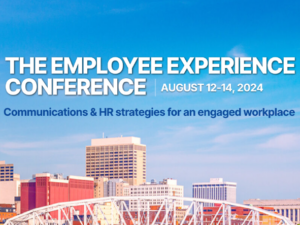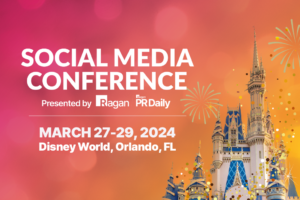Here’s how to become an adaptable writer
We chatted with Laura Brusca, senior vice president of corporate communications at Forbes, who shared her tips for becoming a flexible writer.

Being a proficient communicator is all about knowing your audience and the types of content they want to consume. However, it’s more difficult to get from the ideation stage to choosing the right words than it might seem at first. And you can’t just use the same copy you’d post for a LinkedIn thought leadership piece as you would for a Twitter thread about your employees — it takes a deft touch and strategy to tailor your writing for the right people.
Ahead of Ragan’s Future of Communications Conference in November, we spoke with Laura Brusca, senior vice president, corporate communication at Forbes, about some writing strategies that can result in more impactful communications.
Being impactful means thinking like a journalist.
It’s no secret that the way you communicate has fundamentally changed since the beginning of the pandemic. Brusca says that with many employees still working in a hybrid environment, written communications through channels like Zoom, Slack and e-mail have become more important than ever. This increased emphasis on thinking critically about how our written communications are received can carry over to what you’re trying to accomplish for our businesses too.
“One of the most important aspects of writing for comms is thinking like a journalist,” said Brusca. “I started my career off at a PR agency before I came to Forbes, and working in a newsroom environment in a communications role is really interesting. I love the news and media and being here has helped me learn more about what is of interest to reporters and what will work in the news.”

Laura Brusca, senior vice president, corporate communications, Forbes
She went on to explain that there are a few precepts all communicators can learn from journalists.
“Don’t bury the lede,” Brusca said. “If you have to read three paragraphs in to figure out the story, you’ve likely lost someone’s attention. It’s key to have a great headline and to be thoughtful about the first words you choose to hook the reader.”
“Be concise,” she added. “Make it short and sweet. Also think of ways you can personalize your message to your audience. When we’re thinking about this through the lens of employee communications, we want our writing to feel authentic and true to our brand to maximize impact. This is honestly critical in any type of writing you’re doing.”
Don’t be afraid to experiment.
With so many medium and channel options for sending messages, it can sometimes be a struggle to figure out exactly how you want to package our messaging. Brusca stresses that communicators shouldn’t be hesitant to try new ways to get their stories out.
“We’re constantly experimenting across the board at Forbes, and I think this is an important tactic for all communications writers,” she said. “We have to try to not get bogged down in the same old methods of writing. Maybe this means putting out a message slightly differently than the standard press release. We’re doing something called Forbes Spotlight that works similarly to a press release in terms of information conveyance, but it focuses more on fun, storytelling and visuals. I think it’s great to be able to use lots of different tools to tell a story.”
Distinguish your writing from platform to platform
Communications writers are often tasked with writing copy that lives on multiple digital platforms. But you can’t just use the same style and strategy across each medium. Instead, you need to be thoughtful about how your message will match your platform and the audience you’re trying to reach on it.
“No matter the platform, you need to be clear in your story,” said Brusca, “and most importantly, you can’t be boring in your messaging. You should be mindful of your audience all the time no matter the platform.”
For example, she said, drafting a tweet might require giving the news a catchier headline and a link to more information. Drafting a LinkedIn post might benefit from a more personal touch as it’s being sent to a network of people who are already following you. Composing an email requires an added mindfulness for the timing, tone and surrounding environment of the message.
When you’re writing something, you should always be holistic in your approach,” Brusca said.
Catch Laura Brusca speaking about the future of data and analysis during her panel at Ragan’s Future of Communications Conference on 11/2 in New York City. Register today!
Sean Devlin is an editor at Ragan Communications. In his spare time he enjoys Philly sports, a good pint and ’90s trivia night. Follow him on LinkedIn.
COMMENT
Ragan.com Daily Headlines
RECOMMENDED READING
Tags: Effective communication, writing







